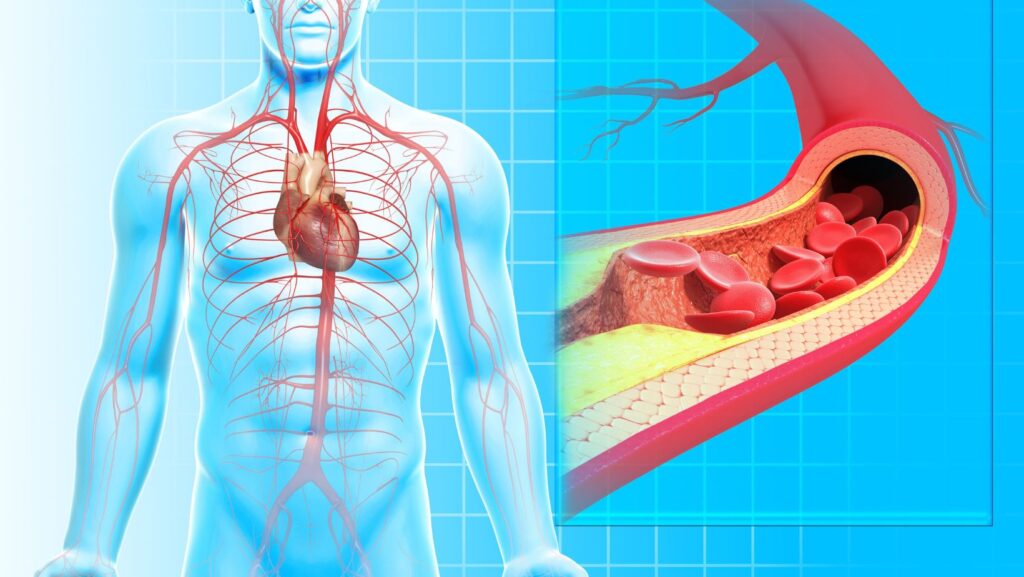Source: Doctor.Global
Atherosclerosis is a condition characterized by the hardening and narrowing of the arteries due to plaque buildup. It is a leading cause of heart attacks, strokes, and peripheral vascular diseases. This complex process involves the deposition of fatty substances, cholesterol, cellular waste products, calcium, and fibrin within the inner lining of an artery. Over time, these deposits can grow large enough to obstruct blood flow, leading to various cardiovascular diseases. This article explores the intricacies of atherosclerosis, including its causes, consequences, and current management strategies to mitigate its effects on individual health.
The Mechanisms Behind Atherosclerosis
Atherosclerosis begins with damage to the endothelium, the inner lining of arteries. Factors such as high blood pressure, high cholesterol, smoking, and diabetes can contribute to this damage. Once the endothelium is compromised, cholesterol and other substances infiltrate the artery wall, forming fatty streaks. Over time, these streaks accumulate more plaque, which can harden and reduce blood flow in the artery. If a plaque ruptures, a blood clot can form and potentially block blood flow entirely.
Key Risk Factors
Modifiable Risk Factors
Understanding and addressing modifiable risk factors is crucial for preventing and controlling atherosclerosis. These include:
- Unhealthy diet
- Physical inactivity
- Obesity
- Smoking
- High blood pressure
- High cholesterol
- Diabetes
Non-Modifiable Risk Factors
Some risk factors are beyond control, such as:
- Age
- Family history of early heart disease
- Being male or a post-menopausal woman
Symptoms and Clinical Manifestations
The symptoms of atherosclerosis vary depending on the affected arteries:
- Coronary Arteries: Blockages can cause chest pain (angina) or heart attacks.

- Carotid Arteries: Blockages can lead to transient ischemic attacks (TIAs) or strokes.
- Peripheral Arteries: Narrowing can result in peripheral arterial disease (PAD), causing pain and numbness in the legs and feet.
- Renal Arteries: Blockages can cause chronic kidney disease.
Diagnosing Atherosclerosis
Diagnosing atherosclerosis involves a comprehensive approach, including:
- Blood Tests: Measure cholesterol, triglycerides, and blood sugar levels.
- Electrocardiogram (ECG): Detects heart-related problems.
- Echocardiography: Provides images of the heart.
- Imaging Tests: Such as coronary angiography, carotid ultrasound, and computerized tomography (CT) scans.
Managing and Treating Atherosclerosis
Effective management of atherosclerosis includes lifestyle changes, medications, and sometimes surgical interventions:
- Lifestyle Changes: Adopting a heart-healthy diet, staying physically active, quitting smoking, and maintaining a healthy weight.
- Medications: Drugs to lower cholesterol, control high blood pressure, and manage diabetes.
- Surgical Interventions: Procedures like angioplasty, stent placement, or coronary artery bypass grafting (CABG) to restore blood flow.
Preventive Measures
Preventing atherosclerosis involves:
- Diet: Eating more fruits, vegetables, whole grains, and lean proteins.

- Physical Activity: Regular exercise to maintain a healthy weight.
- Avoiding Smoking and Excessive Alcohol: Reducing these habits significantly lowers risk.
- Regular Health Screenings: Early detection of risk factors like high blood pressure, cholesterol, and blood sugar levels is essential.
The Future of Atherosclerosis Research
Ongoing research offers hope for better understanding and treating atherosclerosis. Advances in genetic testing, new lipid-lowering therapies, and innovative imaging techniques aim to detect the disease at its earliest stages. Additionally, studying the role of inflammation in atherosclerosis is paving the way for new therapeutic targets.
Conclusion
Atherosclerosis is a common and potentially fatal condition that requires comprehensive management and control. Timely interventions, based on a clear understanding of the etiology and risk factors, can prevent further progression of the disease. Individual management involves combining lifestyle changes with medical and sometimes surgical treatments. Future research and advancements in treatment promise more effective strategies to improve cardiovascular health and the quality of life for those affected by atherosclerosis.
